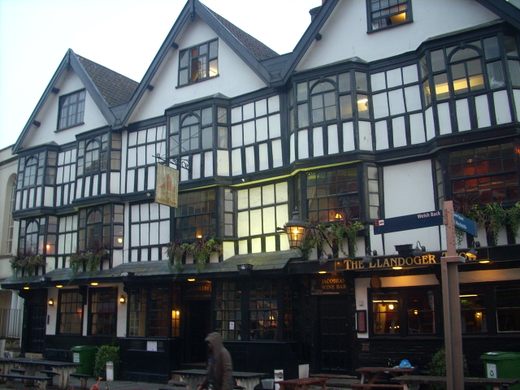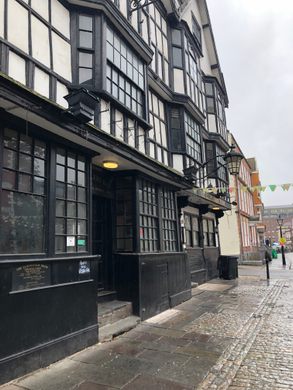AO Edited
The Llandoger Trow
A historic, reportedly haunted pub that provided inspiration for several famous adventure novels.
Bristol has long been renowned for its port, so it should come as no surprise that the city has had close association with swashbuckling buccaneers. But even in such a city, one pub’s historical significance might shiver your timbers.
Built in 1664, the Llandoger Trow is a public house that stands on King Street to this day. Originally a row of three houses, the pub survived a bombing in the WWII and remained in relatively good condition with three of its original five gables intact.
The pub was named by its owner, Captain Hawkins, who was a sailor from the Welsh village of Llandogo, about 20 miles from Bristol. A trow is a type of cargo boat that was often used for trade on the rivers Severn and Wye, which flow through the village and the city.
The Llandoger Trow is where the English writer Daniel Defoe met Alexander Selkirk, a Scottish privateer who had spent more than four years as a castaway on an uninhabited island. Selkirk’s story inspired Defoe to write his famous 1719 novel, Robinson Crusoe. The pub also provided inspiration for Robert Louis Stevenson’s 1882 novel Treasure Island—the Admiral Benbow Inn from the first chapters as well as (possibly) The Spyglass, a Bristolian inn run by Long John Silver, are modeled heavily after the Llandoger Trow. Another infamous patron was a young local named Edward Teach, who would eventually become the notorious pirate known as Blackbeard.
The building is also reportedly haunted, home to no less than 15 ghosts, including a young boy with a limp whose footsteps can be heard throughout the premises.
The pub was closed down for nearly 2 years with a major restoration and new owners, and has reopened in June 2021.
Community Contributors
Added by
Edited by
Plan Your Trip
The Atlas Obscura Podcast is Back!










































Follow us on Twitter to get the latest on the world's hidden wonders.
Like us on Facebook to get the latest on the world's hidden wonders.
Follow us on Twitter Like us on Facebook